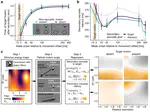eye movements
In this piece we showed that the visual traces that moving objects induce during saccades can facilitate secondary saccades in both accuracy and saccade initiation latency. Secondary saccades are typically prompted when one saccade does not entirely reach a target or when the saccade target is displaced in mid-flight. Our results provide evidence against the widely acknowledged notion that our brains preemptively discard visual information which reaches the eye during saccades. The paper has received some peer and media attention, such as a well-written commentary by Jasper Fabius and Stefan van der Stigchel, as well as articles in Nature Research Highlights, AAAS, New Scientist, or Vozpópuli (see the Rolfslab's blog post for the full list). Notably, this study is the first one to apply the new TrackPixx eye tracking system, for which I have written a Matlab toolbox.
